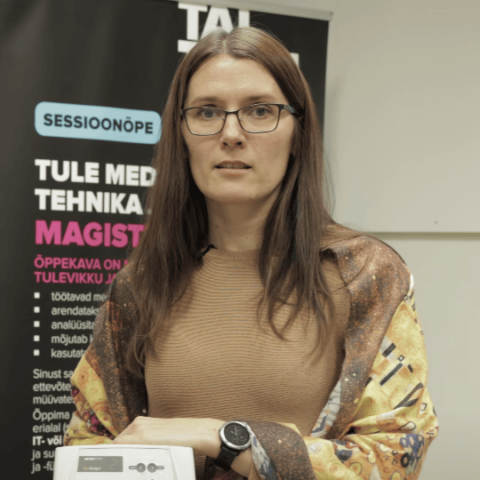
The research group is experienced in the interdisciplinary area of information technology and brain physiology. The studies are aimed to detect and interpret the features in the brain electroencephalography (EEG) signal characteristic for mental disorder (e.g. depression), occupational and/or environmental stressors comprising the advanced methods of signal analysis and the knowledge about brain neuronal activity. An original Spectral Asymmetry Index (SASI) has been developed and proved as a promising method in various applications.
Main results
- by applying EEG-based objective measures it is feasible to detect the changes and recovery caused by mRNA COVID-19 vaccine;
- there is no threshold for the biological or health effects of radio frequency radiation, while the health risk can be minimized by linking the health protection limit values to the level of radiation, in which no significant health effects have been noticed during a long period of exposure (6 V/m).
More information: Homepage
brain disorders, depression, EEG, electroencephalography, signal processing
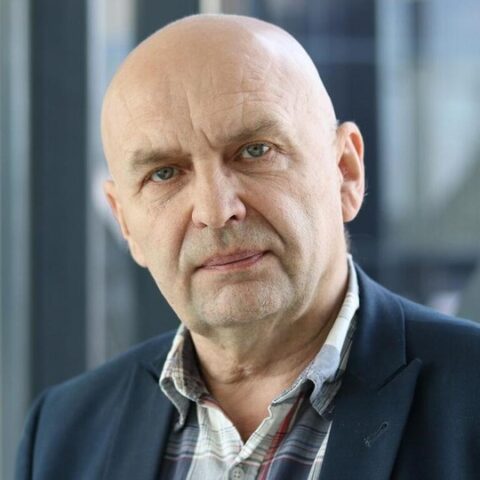
- future professionals
- dependable
- interoperable and evolutionarily changeable enterprise applications
- dependable, interoperable and evolutionarily changeable enterprise applications
- professional education
- professional applications
- business software
- reliability
- dependable, interoperable and evolutionarily changeable enterprise applications
The research of the Business Information Technology Group is focused on a theory and practice of dependable, interoperable and evolutionarily changeable enterprise applications and on the education of a future specialists in the field.
business software, dependable, future professionals, interoperable and evolutionarily changeable enterprise applications, professional applications, professional education, reliability
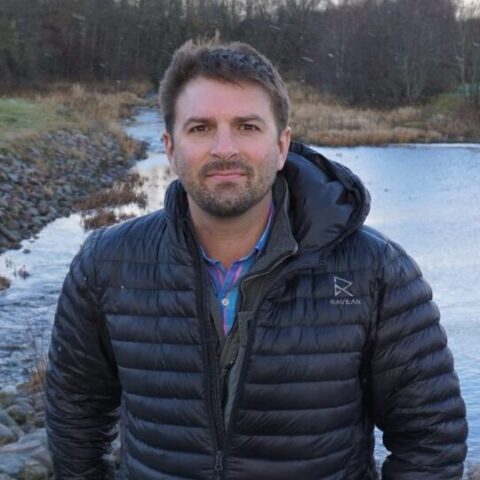
The Centre for Environmental Sensing and Intelligence is specialized in the development and deployment of rugged multi-modal sensors for measurements in extreme environments, data-driven modelling and eco- and ethohydraulics.
Core competences of the centre are:
- Underwater sensing in extreme environments including hydropower turbines, rivers, coastlines and glaciers.
- Real-time signal processing for rugged and reliable multi-modal autonomous sensors.
- Data-driven modeling and assimilation of outdoor sensor network data with numerical models.
- Eco- and ethohydraulic sensing and modelling, with a focus on fish and hydropower.
- Underwater multispectral cameras and automated vision methods for detection and tracking in adverse environments.
As our R&D activities are all related to monitoring human impacts (e.g. air quality in cities, negative effects of hydropower operations on river ecological systems and fish biodiversity), the methods and results we produce are highly relevant to the local, regional, national and transnational scales. For example, we are developing sensors to monitor human gaits to aid in rehabilitation which impacts the individual. At the same time, a modified version of this sensor platform is used by hydropower researchers to replace live fish in field studies, which impacts 100,000 of live fish throughout Europe.
computer vision, hydropower, open government data, underwater sensing
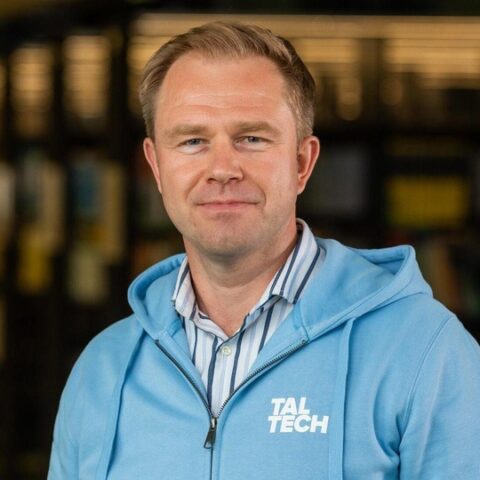
The Research Centre focuses on cross-layer reliability and self-health awareness technology for tomorrow’s complex intelligent autonomous systems and IoT edge devices in Estonia and EU.
The team studies advanced cyber-physical systems characterized by their heterogeneity and the emerging computing architectures employing AI-based autonomy. The centre generates knowledge to equip engineers with design-phase solutions and in-field instruments for industry-scale systems to facilitate system’s crashless operation.
The core competences of the group are:
- Hardware design
-VHDL and Verilog designs
-EDA tools (Cadence, Siemens, Synopsys platforms)
-Application-specific computing platforms (Unmanned Aerial Vehicles) - FPGA-based solutions and methodologies
-FPGA SoCs (Zynq, CycloneV)
-EDA tools (Xilinx Vivado, Altera/Intel Quartus, Lattice Diamond - Software and embedded SW development
-Bare-metal applications, bootloaders, Linux drivers and Userspace applications,
-Petalinux, Yocto, FreeRTOS and embedded SDKs, ELDK - Cross-layer reliability and fault management
-ML-based solutions
-Functional Safety (ISO26262) - Test strategy development and troubleshooting instrumentation
-JTAG/IJTAG based solutions (standards IEEE-1149.1, IEEE-1149.6, IEEE-1687)
cost-efficient computing, edge-AI accelerators, embedded systems, functional safety, hardware design, intelligent autonomous systems, machine learning, predictive maintenance, reliability, system health awareness, trust-efficient computing

The core competencies of the research group are the development of IT solutions related to digitalization of health care (e-health) and research of the interoperability factors necessary for their implementation.
The factors to be studied include strategies, standards, IT architecture, data statuses and databases used for large (national or regional) e-health systems.
The research team’s staff also manages and develops Europe’s first and longest-running Digital Health curriculum, established in 2009, ensuring its quality, relevance, and continuous improvement. In this programme, students explore key areas such as e-health implementation, healthcare data systems, medical imaging, healthcare financing, and change management. With a strong focus on legal and ethical considerations, as well as real-world applications, graduates will have developed the skills needed to lead the digital transformation of healthcare.
More information:
Centre for Digital Health: Centre for Digital Health | TalTech
Digital Health Master´s programme: MSc in Digital Health | TalTech
assessment of digital health technologies, change management in healthcare, digital health, eHealth
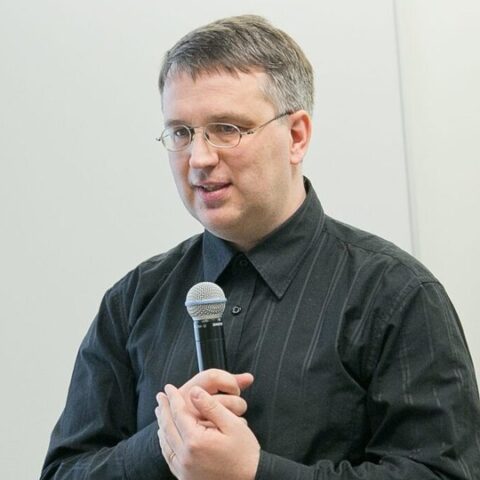
- Tarmo Uustalu
- Jüri Vain
- Juhan-Peep Ernits
- Evelin Halling
- Leonidas Tsiopoulos
- Silvio Capobianco
- Hellis Tamm
- Sven Nõmm
- Niccolo Veltri
- Denis Firsov
- Gert Kanter
- Elli Valla
- Hendrik Maarand
- Cheng-Syuan Wan
- Martin Simon
- Rajesh Kalakoti
- Michele De Pascalis
- Philipp Joram
- Exequiel Matias Rivas Gadda
- Ian Erik Varatalu
- Norman Kuusik
- Aboubaker Seddiq Benterki
- Andrea Laretto
- Nathanael Arkor
- Ioannis Andreou
- Bryce Clarke
- Jaak Kütt
- Lulof Ludovicus Pirée
- Mihhail Daniljuk
Built of the logic and semantics and the formal methods groups (led by T. Uustalu and J. Vain), the lab conducts research into theories, methods and tools for developing high-assurance software, specializing on both proofs (certified software) and testing.
In recent years, applied machine learning became a distinct research area of the lab (led by S. Nõmm).
formalized programming theory, functional and dependently-typed programming, software verification and testing

- telepresence robots
- robot assistants
- blended- and online teaching methods
- social presence
- human-robot interaction; robot assistants
- interaction scenarios for autonomous robots in the social and healthcare sectors
- social service robots
- blended and online learning methods
- STEAM approach integration into IT teaching
- artificial intelligence in education
- hybrid learning
- STEAM integration in IT education
- remote communication
The Creativity Matters IT Didactics Research Group is a multidisciplinary team focused on higher education IT didactics for engineering fields.
The main research areas are the use of:
- telepresence robots and robot assistants in higher education, health care, social welfare, and the service sector
- innovative hybrid and web-based teaching methods
- the integration of the STEAM approach into IT education.
Established in the second quarter of 2022, the research group comprises members from other TalTech structural units including Tartu College, Department of Software Science. Some Tallinn University re-searchers are also involved in the research group’s activities.
Webpage: https://cm.taltech.ee/
artificial intelligence in education, blended and online learning methods, blended- and online teaching methods, human-robot interaction; robot assistants, hybrid learning, interaction scenarios for autonomous robots in the social and healthcare sectors, remote communication, robot assistants, social presence, social service robots, STEAM approach integration into IT teaching, STEAM integration in IT education, telepresence robots

The group performs R&D of electrical impedance spectroscopy measurement solutions.
This covers the developing and investigation of related instrumentation, signals and signal processing for several applications (including test and diagnostics e.g. in bio-, healthcare, medical and microfluidics areas, for metal, electronics and other industries).
eddy current, impedance spectroscopy, impedance tomography, instrumentation, real-time measurement
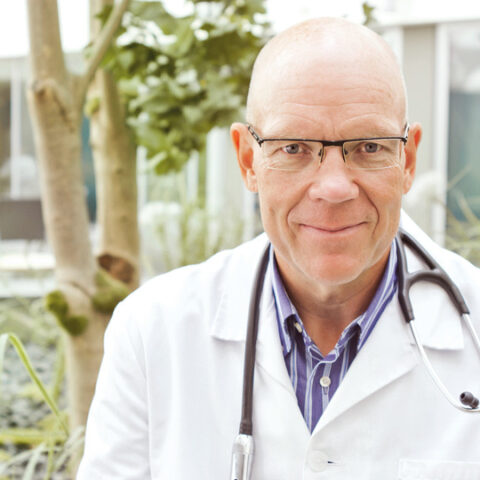
COMPETENCY:
- Research and development of novel technologies in cardiovascular medicine.
- Development of cardiovascular medical engineering.
- Clinical application of novel technologies in the field of cardiovascular medicine.
- Early atherosclerosis and development of novel technologies and devices.
- Hemodynamics of resistant hypertension and development of novel methods in guiding of drug treatment.
- Cardiovascular risk assessment (including polygenic risk score) and management.
- Diagnosis and treatment of familial hypercholesterolemia.
atherosclerosis, diagnosis, hypertension, technologies, treatment
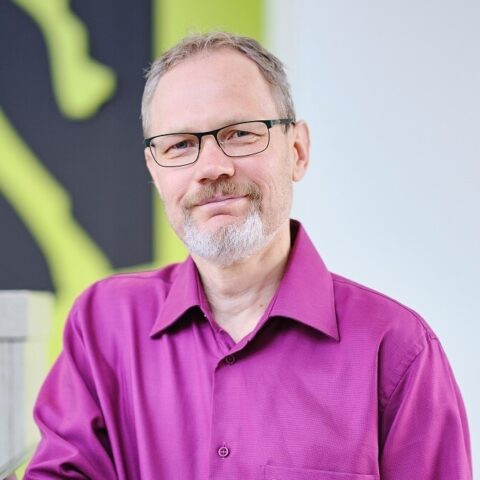
The main research field of the SensorTechBME team is to develop flexible and novel sensor technologies and algorithms in biomedical engineering applications:
- To estimate dialysis adequacy and quality securing end stage renal disease (ESRD) patients’ care quality. The research is exploring spectrophotometrical and spectrofluorimetrical characteristics-signatures of the biofluids and performing various signal processing and analysis on those signals.
- To develop beyond the state-of-the-art applications incorporated into a smart wearable multi-sensor fusion system for generating valuable data about the workers’ location, locomotion, physical activity, energy consumption and physiological status;
- For speech-to-text usage in healthcare and industry
More information: Homepage
Algorithms, automatic speech recognition, biofluid optics, dialysis, energy consumption, fatigue monitoring, on-line monitoring, physical activity monitoring, sensor fusion, sensors, signal processing, smart work wear, spectrofluorimetry, spectrophotometry, speech-to-text applications, uremic toxins

- high temperature materials
- microstructural analysis
- multifunctional structures
- spark plasma sintering
- tribology
- ceramics
- recycling
- bio-inspired materials
- chemical vapour deposition
- graphene
- self-propagating high temperature synthesis
- composites
- mechanical testing
- corrosion resistance
- additive manufacturing
- wear resistance
The research is broadly subdivided into three main interconnected and highly interdisciplinary directions focused on:
- hierarchically structured bio-inspired multi-functional composites including but not limited to electroconductive ceramics, functionally graded and anisotropic ceramic-based composites, mesoporous ceramics, nanofibers, graphene added bulks, ceramic membranes;
- tribology and high-temperature damage-tolerant composites for tribo-applications;
- selective laser melting and powders for SLM/S of ceramic-metal composites and AM of complex-shaped ceramic-matrix composites.
The team has several inventions keeping research at a high international level. The most influential are:
- a self-aligned fibrous scaffold for highly anisotropic cell cultures;
- a method for producing nanofibers composites by combustion techniques and products comprising thereof;
- fibrous ceramic networks and preparation thereof by selective laser melting; and (iv) ceramic complex structures by SLS.
additive manufacturing, bio-inspired materials, ceramics, chemical vapour deposition, composites, corrosion resistance, graphene, high temperature materials, mechanical testing, microstructural analysis, multifunctional structures, recycling, self-propagating high temperature synthesis, spark plasma sintering, tribology, wear resistance
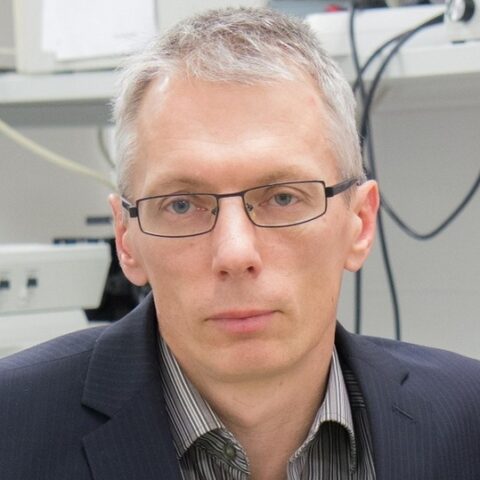
The group develops smart biosensing functional materials to propose solutions with considerable potential impact on essential areas of human life such as environmental protection and medical diagnostics. By employing the molecular imprinting technology, the group designs and synthesizes polymeric materials so called Molecularly Imprinted Polymers (MIP).
The main benefits of MIPs is related to their synthetic nature, i.e. excellent chemical and thermal stability Associate with reproducible, cost-effective fabrication. MIPs can be easily integrated with a variety of sensor platforms including piezogravimetric, optical and electrochemical transducers and allowing label-free detection of a target analyte with high sensitivity and selectivity.
The group succeeded in developing the MIP-based sensors capable of determining sulfamethizole, amoxicillin, erythromycin as well as immunoglobulin G, neurotrophic factors (BDNF, CDNF) and viral proteins (SARS-Cov-2 nucleocapsid and spike proteins).
chemical sensors, covid-19 express test, environmental monitoring, medical diagnostics, molecularly imprinted polymers, PoCT, sensors, synthetic receptors
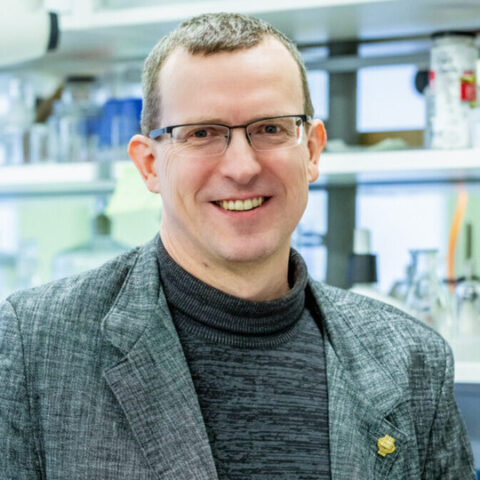
The main focus of the laboratory's research is the valorisation of bio-based environmental resources in everyday and high-tech applications. The aim is to find sustainable alternatives to fossil-based polymeric materials by applying bio-based alternatives and recyclables.
The laboratory seeks novel ways to sustainably valorise cellulose by applying new, recyclable solvent systems, bio-based chemical modification reagents, and energy-saving technologies. New, bio-based or well-recycled solvent systems are used. The use of plant oils for the esterification of cellulose is being studied, and the technology of reactive extrusion is being developed as a synthesis medium.
The laboratory is the only one in Estonia that has the capacity to pilot electrospinning. By the electrospinning method, triboelectric materials and filter materials based on cellulose derivatives are developed.
The laboratory has a unique pilot production capability in Estonia in essential areas of polymer technology, such as hot mixing, extrusion, and injection moulding. Thermoplastic or thermosetting polymer composites with inorganic or bio-based additives are being developed to efficiently use secondary raw materials in the circular economy. It will be clarified whether and how different types of mineral waste, such as ash from electricity or oil production, can replace mined mineral resources such as limestone. Solutions are also being sought for larger-scale recycling of textile waste and lignocellulosic fibers.
Activities:
conducting studies at the bachelor's, master's and doctoral level.
conducting basic and applied research in the field of technology and chemistry of polymeric materials and biopolymers.
providing product and technology development, piloting and testing services to companies.
Virtual tour in the laboratory
biopolymers, conductive polymers, derivatives of cellulose, electrospinning, filtering materials, nanofibres, polymer technology, polymeric composites, polymers, reactive extrusion, supercapacitors, textile

Mechatronics is one of the most dynamic technical trends in the world and represents the synergy of IT, electronics, optics, and mechanical systems. The research activities of the Mechatronics and Autonomous Systems Research Group are directed at the further development of the field. The Mechatronics and Autonomous Systems Group's research activities focus on further development of mechatronics and autonomous systems. Modern vehicles (including various electric vehicles, e.g., electric cars, unmanned land, and aircraft) also require energy efficiency optimization. The research team is developing several test platforms and digital twins to achieve this goal. The possibilities of combining real and virtual sensors with artificial intelligence are being explored to prolong the working life of vehicles and reduce the risk of failure.
Additionally, the main focus of R&D is the development of hardware and related software based on artificial intelligence for robotics and automation control systems and developing user interfaces for systems, sensing, and especially new machine vision applications. The emphasis is on industrial robotics and the development of unmanned aerial vehicle (UGV) and unmanned aerial vehicle (UAV) systems, as well as hardware-in-the-loop simulation and test systems.
The mechatronics and autonomous systems research group offer expertise, consultations, training, and research partnerships.
design and control of mechatronic systems, digital twins, machine vision applications, propulsion drive, UGV and UAV simulations

The competencies of the research group are: production digitalisation, virtualisation, simulation, development of digital twins, reconfiguring manufacturing from conventional machining technologies to 3D related.
Main results: An approach was proposed to develop a Digital Twin of production systems in order to optimize the planning and commissioning process. The proposed virtual cell interacts with the physical system with the help of different Digital Manufacturing Tools (DMT), which allows for the testing of various programs in a different scenario to check for any shortcomings before it
is implemented on the physical system. Case studies from the different production systems were demonstrated to realize the feasibility of the proposed approach. Based on the concept of Industry 5.0, it is important to integrate the human operator, especially using virtual and augmented reality tools.
Corresponding tests have been carried out both in terms of the user interface and medical indications. Development of an integrated and recursive artificial intelligence-based decision-making process for robotic workplace design and performance evaluation has been performed.
A User-Centred Design approach was implemented, which is crucial in addressing the open challenges of Human-Robot Collaboration systems. Our work allocates Digital Twins and Augmented and Virtual Reality technologies (AR/VR) as central in this process by considering them as the key tools for the design, control, and assessment of modern collaborative industrial scenarios. It aims at assessing three types of input paradigms with virtual user Interfaces controlling a Digital Twin robot arm in a simple pick and place task and which can be based on different VR controller devices.
digital manufacturing, digital twins, industry 4.0/5.0, manufacturing, smart manufacturing

Our research aims at the development and application of new, environmentally friendly, and reliable analytical techniques for environmental, food, biomass, forensic, and clinical analysis. For that, we utilize a wide range of instrumentation tools and technologies.
We strive to contribute to a safer and healthier world by promoting the Green Analytical Chemistry concept in our research.
We develop analysis techniques and procedures to decrease or eliminate solvents, reagents, and other materials that are dangerous to the individual or the ecosystem and provide rapid and energy-saving methodologies. For that, we apply statistical experimental design (DOE) to decrease the number of experiments during the process optimization stage and develop non-destructive cutting-edge analytical technologies, combined with chemometric tools (multidimensional data analysis and modeling), which are almost free of hazardous chemicals and wastes, fast and provide accurate, reliable and consistent results.
R&D in analytical chemistry, services, teaching

The main topic of the research group is related to the identification of fundamental aspects of lipid and lipoprotein metabolism.
The main focus of the study is on the mechanisms of regulation of lipases and lipoxygenases.
We have competence and experience in the study of the structure and properties of proteins, in the analysis of biomolecular interactions, in enzymology and in the analysis of lipids.
In our research we use mass spectrometry, chromatography, calorimetry, surface plasmon resonance and fluorescence-based technologies.
biomolecular interactions, lipases, lipid analysis, mechanisms of lipid and lipoprotein metabolism regulation
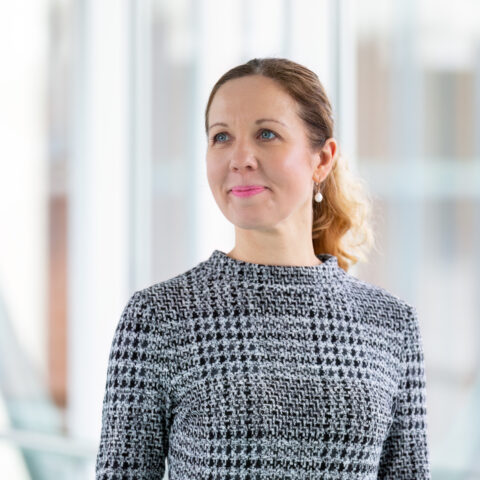
Biomedicine lab investigates human pathogen Helicobacter pylori (HP) and its role in the development of liver diseases. HP is a Gram-negative bacterium living in the hostile environment of the human stomach. About 70% of the adult population in Estonia is infected with HP. The bacterium causes gastritis and peptic ulcers, and, in some cases, gastric cancer. HP can also affect other organs including the liver. However, the mechanisms by which HP causes liver damage and promotes carcinogenesis remain largely unknown. Ongoing research is expected to increase our understanding of the mechanisms behind bacteria-induced carcinogenesis.
Main research topics include:
- Role of Helicobacter pylori-induced invadosomes in liver damages. We have previously shown that infection with HP induces the formation of invadosomes in hepatocytes. We are currently investigating the mechanism behind this phenomenon using in vitro approach complemented with transcriptome sequencing.
- Clinical aspects of Helicobacter pylori-induced liver diseases. We are using the livers of mice infected with HP to analyse short- and long-term effects of the infection with focus on different markers such as YAP1 and CD44.
- Alteration of gut microbiota by Helicobacter pylori leading to the progression of liver diseases. For this study, we are collecting samples from Estonian patients. Our goal is to characterize Estonian HP strains, their effect on mouth/stomach/gut microbiota and liver.
- Effect of probiotic lactic acid bacteria on HP and HP-induced inflammatory response.
actin cytoskeleton, Helicobacter pylori, invadosomes, liver damage, microbiome

The goal of the R&D activity is to create the proof of concept of and develop the methodology for low-cost, fully portable flow cytometers based on droplet microfluidics, which will allow field analysis through cognitive electronics system.
More information at: TalTech LoC
cognitronics, Lab-on-Chip solutions, microfluidics

DNA replication remains one of the main targets of cancer therapies as cancer cells tend to proliferate faster and are generally prone to replication stress. However, most of the replication initiation research to date has been done using model organisms such as yeast Xenopus laevis egg extracts. The human DNA replication system is much more complex, and identifying human homologs using data from model systems has proven difficult, resulting in the need to re-evaluate every finding from a model system on a case-by-case basis.
The main goal of the group is to study the molecular mechanism of DNA replication initiation in human cells. Currently the research is focused on the following topics:
- The role of DNA polymerase epsilon in replication initiation in human cells;
- Developing a novel system to study DNA replication initiation in human cells based on proximity labelling;
- The role of Timeless protein in health and disease.
Key methods: mammalian cell culture, CRISPR/Cas9 based knock-ins, co-immunoprecipitations, immunofluorescent staining/microscopy, flow cytometry, molecular cloning, DNA fiber analysis, iPOND, proteomic screens.
DNA replication, origin firing, replisome
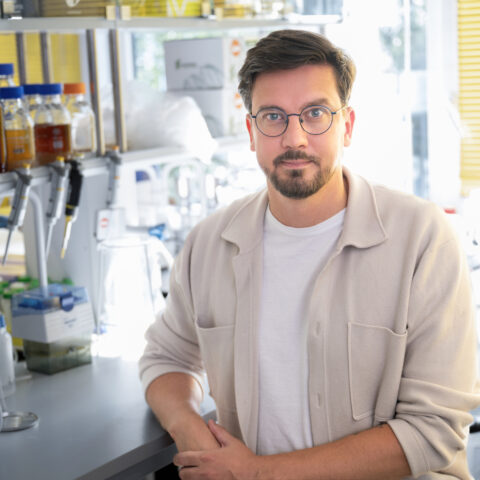
Our research is focused on addressing global challenges of bio-sustainability, including sustainable production of food and feed, but also biochemicals and materials. We are developing novel bio-based processes where microbial cell factories are used to convert various waste carbon like food- and wood industry waste into value-added products.
Relying on the multi-disciplinary skill-set in our research group, we have established the Design-Build-Test-Learn cycle of cell factory design and bioprocess optimization. We use advanced metabolic modeling for the design of novel cell factories; we develop novel synthetic biology tools for the more efficient engineering of cell factories; and use our lab-scale bioreactor platform for the process characterization and optimization. We are additionally utilizing the advancements of additive manufacturing to develop ’living materials’, which will improve biotechnology-based production processes.
By combining these approaches, we aim to translate fundamental science results in industrial biotechnology applications by constructing more efficient producer cells. Together with our global and local partners, we are developing the whole value chains in circular economy for the sustainable production of value-added products with minimal waste streams.
More information: https://bioeng.taltech.ee
biotechnology, cell factories, circular economy, local substrate valorization, synthetic biology, systems biology, yeast

The central nervous system tissues are made of a number of different cell types, among which astrocytes are one of the most abundant type. In the CNS tissue cells are highly intermixed, posing a challenge when trying to analyze their transcriptomes and proteomes separately. Owing to the difficulties separating these cells, bulk tissue analysis has been used previously to profile mRNA and protein in tissue, giving averaged readouts across the tissue. In the past decade, cell type specific RNA analysis has seen enormous progress with the advent of single cell RNA sequencing and genetic tools for cell-type specific RNA isolation (TRAP, Ribotag). However, cell type specific proteome analysis is lagging behind and widely used, straightforward methods are not available.
Our research aim is to develop a cell type-specific proteome analysis method that is based on puromycin labeling, and to apply the method to studying neuron-astrocyte interactions in an in vitro co-culture system. In addition, we shall use the Ribotag method for cell type-specific mRNA analysis.
A key strategy we are planning to use for studying intercellular communication is activation of either neurons of astrocytes by triggering intracellular Ca2+ release by using the DREADD chemogenetic system – followed by proteomic and transcriptomic analysis of the other cell type in culture.
Our additional research interest is regulation of neurotrophin BDNF in astrocytes and cardiomyocytes.
Key competences: cell cultures of neurons, astrocytes and cardiomyocytes; cell type-specific RNA and protein analysis; adeno-Associate virus (AAV) vector production and use.
cell type-specific RNA and protein profiling, cell types of the nervous system, neurotrophin BDNF in non-neuronal cells

The group focuses on the biology of leukocyte activation and its regulation. The control of leukocyte activation is of paramount importance for health, both at
the steady state and during the immune response.
We have selected two families of regulators of which the immune regulatory functions remain poorly understood, the RGS (Regulator of G protein Signalling; main target RGS16) and the purinergic receptors (P2X main targets p2x4 and p2x7). We studied control mechanisms of leukocyte activation mediated by these genes in the context of two pathologies: multiple sclerosis and melanoma. We also followed comparative approaches to understand the importance of these genes in the context of the evolution of the immune system.
covid-19, eosinophils, immune regulation, leukocyte activation, melanoma, Multiple Sclerosis, P2X4, P2X7, RGS16, SarsCov2
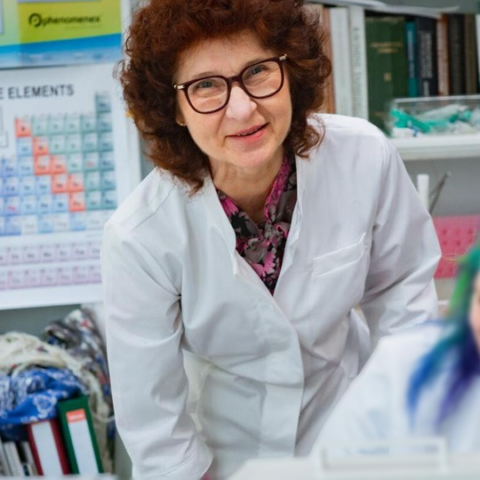
The members of the group have competence in development of analytical methods and procedures and use of these in analysis of different compounds and mixtures in complicated matrices. The group has good specialists in separation methods: gas and liquid chromatography and especially in capillary electrophoresis where they use a wide variety of detectors: electrical, optical and mass spectrometrical.
The group has also competence and means for supercritical extraction for a wide range of extraction parameters. The group has provided recognised results on development of porous materials – aerogels and these have been taken into use as adsorbents in analytical separation and catalysts in electrochemistry and water purification.
The aim of the present research is development and application of a variety of analytical methodologies (capillary electrophoresis, HPLC-MS, GC-MS) for analysis of different classes of compounds (banned chemicals, drugs, polyphenols, fermentable sugars) in complex matrixes such as environmental samples, body fluids, biomass and herbal extracts. The results obtained will be used to develop an expert system. Miniaturization of capillary electrophoresis apparatus is an important feature, which provides an opportunity to perform on-site analyzes.
antioxidativity, banned chemicals, biomass, capillary electrophoresis, deep eutectic solvents, ionic liquids, miniaturization, modified materials, phytochemicals, separation methods
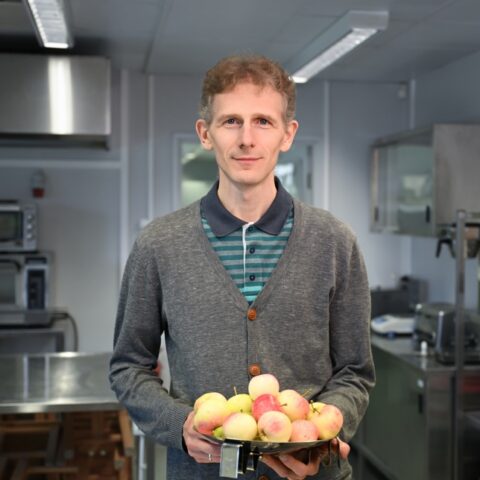
Modern food products and environmental factors have significantly affected the composition of human gut microbiome. A healthy microbiota is the basis for good health and wellbeing. Gut bacteria are involved in the breakdown of non-digestible by human enzymes food components (mainly dietary fibres). Finding the links between the microbiota and diet enable to develop personalised dietary recommendations and food technologies to help prevention of pathogenic processes in the digestive tract. The main aims are to:
1. find links between the gut microbiota, nutrition and health characteristics,
2. analyse metabolism of gut bacteria (development of metabolic models),
3. identify patterns of gut microbiota characteristic to different diseases,
4. develop new technologies to produce microbiota-based therapeutics (both bacterial and bacterial-virus i.e. phage-based).
5. develop technologies to produce microbiome-supporting food products
Research Methods
1. advanced continuous cultivation and high-throughput batch methods to describe starter cultures, to optimize the production process, virome propagation etc.
2. high-throughput sequencing (16S rRNA gene, metagenomics) to study microbial communities in human samples and cultivation samples,
3. analytical methods, including HPLC, GC, micro-GC, UPLC coupled with MS (/ MS) for metabolite analyses,
4. nutrition studies with metadata collection methods (recalls, food diaries, health questionnaires),
5. Mathematical methods are used in the statistical analysis of food processes and in the modeling of fermentation processes.
Main research topics
Metabolism of gut microbiota
Intestinal bacteria produce compounds such as organic acids or gases from food components that play role in human metabolism, e.g. provide energy for human body cells, modulation of intestinal peristalsis, regulation of hormonal and nervous system. On the other hand, excessive production of acids or gases may cause gastrointestinal symptoms. The degradation of dietary fibres and the effect of environmental conditions on bacterial metabolism is a key focus of our research group. We develop food technologies and dietary recommendations to improve acid formation or reduce gas production from dietary fibres corresponding to different microbiota type.
This topic will be continued in a new EU project from September 2024 in collaboration with the University of Helsinki in Finland and University of Örebro in Sweden: FIBER-MATCH, which aims to develop suitable food components for patients with irritable bowel syndrome.
We are collaborating with Elsavie OÜ and PERH (Dr. Jüri Teras) on mapping gut bacteria associated with different diseases.
Cultivation of microbial consortia
The gut microbiota consists of hundreds of different bacteria. The colon microbiota is affected by food production and processing, eating habits, inherited potential and environmental factors. Dietary fibre is one of the main drivers that modulates the composition of gut microbiota. Constant exposure to harmful substances can modulate the gut microbiota towards pathological processes. In such cases, restoration of the gut microbiota can be achieved by faecal transplantation or implantation of artificial microbial consortia. A new alternative, in which we are also involved, is the propagation of bacterial viruses (phages). In collaboration with researchers at the University of Copenhagen, we have developed cultivation-filtration technologies for the propagation of bacterial viruses. We have studied the effects of the virome preparations in a Clostridium difficile infection or diet-induced obesity mouse models. Understanding the relationships between food components and colon microbiota and bacterial virome would make it possible to develop applications for dietary recommendations or treatment and prevention of diseases.
We continue to collaborate with the University of Copenhagen on the PhageX project.
Development of microbiome-friendly food technologies
The increase in food refining over the last century has reduced the availability of useful nutrients (dietary fibres) and bioactive compounds in foods. It directly affects the composition of gut microbiota, as dietary fibres are the main substrates for beneficial gut bacteria. Our recent work has focused on the application of sourdough technology to the production of fibre-rich cereal products to increase the bioavailability of nutrients and reducing the intolerance problem that can be associated with the consumption of dietary fibre-rich foods. By fermentation more food is available for human nutrition and helps also to reduce food wastage.
In collaboration with METK, we are studying the potential of einkorn and other cereals for sourdough production.
We are participating in the COST project PIMENTO, which aims to map consumption patterns of fermented foods of inhabitants of 34 European countries.
bacterial virome, bacteriome, cultivation technologies, food, food composition, food technologies, gut microbiota, nutrition, phageome (bacterial virome)

Microfluidics enables conducting of biological and chemical experiments in very small volumes of fluids. In basic and applied research, the volumes used in experiments usually range from 1 litre to 1 microlitre.
Microfluidic devices allow automating, controlling, and performing tests using even smaller volumes.
Manufacturing of microfluidic devices is multidisciplinary, including the fields of mechanics, IT, engineering, material science, chemistry, and many others.
antibiotic resistance, digital microfluidics, droplet microfluidics, image analysis, microbiology, microfluidics
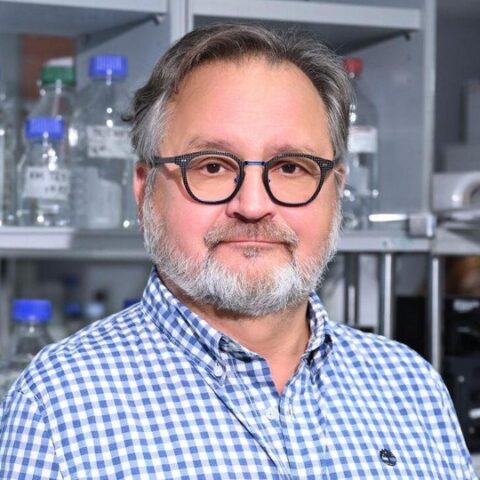
Our studies focus on the molecular mechanisms of gene expression, including transcription, mRNA and protein subcellular localization, translation, posttranslational modifications, and signaling, in the nervous system and in different diseases.
The main emphasis of the research is on neurotrophins, their receptors and activity-regulated gene expression.
Specifically, we study
- Molecular mechanisms controlling neural activity-regulated transcription and translation of the neurotrophin BDNF;
- The functions of the basic helix-loop-helix transcription factor TCF4 in the nervous system of mammals and Drosophila and its deregulation in Pitt-Hopkins syndrome and schizophrenia;
- Molecular markers in blood for early diagnostics of different diseases.
The aim of our research group is to characterize the molecular basis of expression of genes regulated by neural activity in the nervous system and its pathologies.
BDNF, bHLH transcription factors, covid-19, heart and cardiovascular diseases, melanoma, neuronal activity-regulated transcription, neurotrophins, Pitt-Hopkins syndrome, schizophrenia, TCF4/E2-2

The laboratory of neuroepigenetics studies how epigenetic mechanisms control neuronal development and function throughout life. Neurons are born and mature early in development and are typically not replaced during the organism's lifetime. Therefore, once neurons have matured and become fully functional, they must remain so for a long time - in humans, for up to a hundred years or more. This means that the transcriptional programs that become established during neuronal maturation must remain stable - yet responsive to external stimuli - over the entire lifespan of an organism.
We are interested in how the epigenetic landscape is set up and controls transcriptional programs in during neuronal maturation and how epigenetic and transcriptional stability are maintained in neurons throughout life.
Our key projects are:
- Histone bivalency and methyltransferase EZH1 in neuronal development and function
- The role of H3K27me3 in adult and ageing neurons
ageing, brain development, epigenetics, gene regulation, histone modifications, neurons
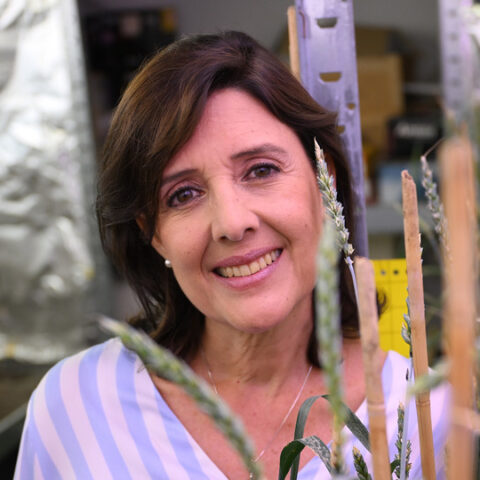
We study genetic, molecular and cellular aspects of plant-microbe interactions. We use predominantly different cereals as well as the model plant Arabidopsis thaliana and various tobacco species as experimental host plant species. We identify and characterize, using next-generation sequencing techniques, viruses infecting cereal crops in Estonia and neighbouring countries. We study especially sobemoviruses. In plant molecular biology, our object of research is ABCE genes.
We take part in the EEA project “EditGrass4Food” that aims to utilize transcriptomics and functional genomics to increase sustainability in agriculture through improvement of perennial ryegrass with better adaptation to frost and drought for current and future climates. The project is developed in cooperation with the University of Latvia (as promoter), Norwegian University of Life Sciences and Lithuanian Agriculture and Forestry Sciences Center.
Thanks to the Estonian-French Parrot programme, we are studying the emergence and divergence of plant viruses on cereals, based on sobemoviruses, together with the Institut de Recherche pour le Développement (Montpellier).
We coordinate the EUPHRESCO project “Diagnosis and epidemiology of viruses infecting cereal crops” and have formed an international research network of scientists interested in mapping the virus spread and improvement of the diagnostics. Currently, there are 24 international partners from different countries.
In have been the coordinators for the EMP project “An innovative platform for Estonia-Norway research-based teaching in bioinformatics and gene editing”.
adaptation to climate change, agricultural crop diseases, biotic and biotic stresses, CRISPR/Cas9, genotyping, plant viruses, RNA silencing suppressors, wheat pre-breeding

The main research object of the group is asymmetric organic synthesis.
The research includes a total synthesis of bioactive compounds and investigations of cascade, including cascade reactions. Studies of asymmetric organocatalytic reactions are of importance. Aminocatalysis based on covalent bound, hydrogen-bond and halogen-bond catalysis based on noncovalent interactions, enzymatic and co-operative catalysis are the main topics. Cascade reactions providing several new chemical bonds in one step are also studied. It increases atom-efficiency, decreases the number of steps needed and makes the whole process environmentally more benign. Practical value to studies is added by the synthesis of human milk oligosaccharides (HMO-s). The synthesis is supported by spectroscopic and crystallographic experiments, chromatography and quantum chemical calculations.The characteristic feature of the research is the application of the principles of sustainable and green chemistry in asymmetric synthesis.
The most important research result is a new method of the synthesis of a specific HMO (6’-galactosyllactose). This new method is based on the application of the immobilised enzyme (CAL-B). It decreases considerably the number of steps needed for obtaining of the glycosylation donors and acceptors.
asymmetric synthesis, cascade reactions, catalysis, halogen-bond catalysis, organocatalysis, synthesis, synthesis of oligosaccharides
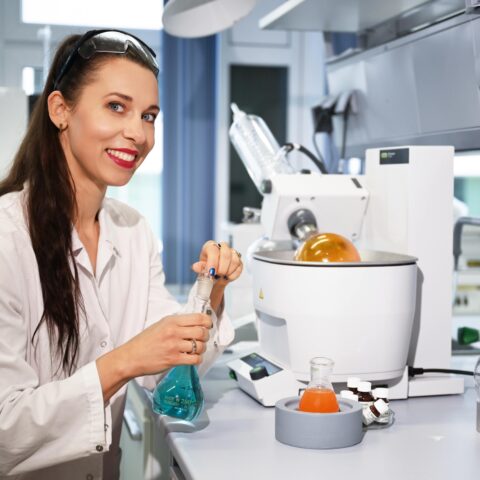
The objectives of the research group are to develop and promote healthy foods and healthy diets through basic and applied research and teaching. We combine methods of chemistry, physics, sensorics, biotechnology, nutrition and food safety. Biochemical, physical and microbiological processes are followed during the whole food chain, from production of raw materials to food consumption. The wide range of competences enable to solve different problems and developments of food and biotechnology companies.
One of the most important areas is the development of science-based food technologies to produce higher value-added products. We develop processes improving product quality, process yields and cost-effective production. We are also studying the use of alternative raw materials for novel foods.
MAIN RESEARCH ITEMS:
- Bio-food systems (Toomas Paalme)
- Food sensory and instrumental analysis (Kristel Vene)
- Peptides as a source of amino acids in fermentation (Ildar Nisamedtinov)
- Food quality and structure (Katrin Laos)
- Food microbiomes: food quality, safety and innovation (Inga Sarand)
- Solid state fermentations (SSF) (Allan Olspert)
cultivation technologies, food, food analysis, food and drink, food chemistry, food fermentations, food microbiology, food physics, food processing technologies, food safety and quality, food technologies, gut microbiota, nutrition

The Research Group of Metalloproteomics is focused on the following topics:
- Structural and functional studies of metalloproteins participating in homeostasis of biometals: zinc, copper and iron by methods like NMR, ESI MS, ICP MS, fluorescence ja UV-VIS spectroscopy;
- The role of biometals: zinc, copper and iron on fibrillization as well as on in vitro and in vivo toxicity of amyloigogenic peptides linked with Alzheimer’s disease;
- Design of new metal-chelating ligands and elaboration of metal-chelating therapeutic strategies for Wilsons and Alzheimer’s disease.
Professor Palumaa is a member of the European Molecular Biology Organization (EMBO).
The most important achievements of the research group during last year were connected with the elucidation of the influence of α-lipoic acid on cellular copper metabolism and evaluation of its therapeutic potential in Alzheimer’s disease insect models.
Alzheimer´s disease, biometals, copper, Wilson’s disease, zinc
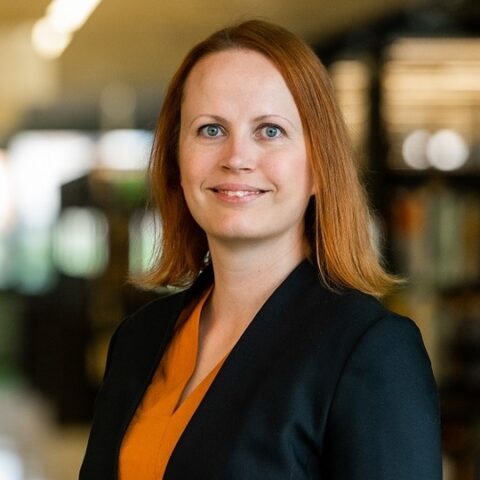
Infertility is a worldwide problem with medical, socio-economical as well as psychological aspects. According to the European Society of Human Reproduction and Embryology, medical intervention is sought for by 15% of couples who wish to conceive their biological offspring (www.eshre.eu).
The Research Group of Reproductive Biology is mainly focused on the problems of female infertility and we investigate the biological processes in human ovary. Our main goal is to describe intercellular molecular interactions in the ovary and to find factors that would aid in discriminating between viable and non-viable oocytes. Various genome-wide high-throughput technologies are used in our research: next-generation sequencing, proteomics and data analysis methods in the field of systems biology to mention a few. We collaborate with all infertility clinics in Estonia in order to collect biological samples (ovarian granulosa cells, ovarian biopsies, follicular fluid, and blood samples) from fertile and infertile women.
The research group of reproductive biology is mainly focused on investigating the molecular origins of female infertility and the possibilities for diagnostics in the field. Our research subjects can be divided into three categories:
a. Research on human ovary and related etiologies of infertility.
b. The effect of environmental chemicals on ovarian function.
c. Development of methods for fertility preservation.
We use modern gene expression and cell population characterization methods: next generation sequencing, single cell technologies, functional assays in cell-line and primary cell culture models, etc. The acquired data is analysed and modelled by bioinformatic algorithms.
bioinformatics, infertility, reproductive biology, sequencing

The research group's vision is “Innovation through border crossing.”
The group focuses on the synergy of science and technology to provide practical solutions and transform scientific discoveries into innovative products. The core technologies of the research group include capillary electrophoresis, fluorescence, conductivity, gas chromatography, microfluidics, and various other modern instrumental and analytical methods. The group develops analytical methods for the detection and quantification of psychoactive substances in biological samples and plant materials. Additionally, the research group studies various substances' pharmacokinetics and metabolism to understand their effects better and develop the corresponding detection methods.
The group collaborates closely with international research teams and partners worldwide and actively contributes to various partnership projects, including Horizon Europe and other research funding programs. Over the past 15 years, the group's scientists have developed and implemented various analyzers for multiple sectors and partners, such as www.drughunter.eu and www.smagry.com.
Key collaborators have included the Estonian Police and Border Guard Board, for whom an innovative solution, the Drug Hunter analyzer, has been developed to meet the practical needs of both the public and private sectors.
analyzers, banned compounds, capillary electrophoresis, chemometrics, Drug Hunter, fluorescence, illegal drugs, microfluidics, precise agriculture, quality management, sensors, smart agriculture

- Riina Aav
- Marina Kudrjašova
- Victor Borovkov
- Dzmitry Kananovich
- Elena Prigorchenko
- Nele Konrad
- Kristjan Siilak
- Marko Šakarašvili
- Jevgenija Martõnova
- Jagadeesh Varma Nallaparaju
- Tatsiana Shalima
- Mari-Liis Brük
- Elina Suut -Tuule
- Thi Thanh Ngan Nguyen
- Karin Valmsen
- Riin Satsi
- Ketren-Marlein Lootus
- Rauno Reitalu
- Mario Öeren
- Tatsiana Jarg
- Ece Ferizoğlu
Supramolecular chemistry research group is interested in study of chiral molecular containers, like hemicucurbiturils.
We are developing sustainable and efficient synthesis methods, concentrating also on mechanochemistry. We are studying molecular and supramolecular structure of macrocycles and their interactions.
Supramolecular chemistry unites approaches of analytical, organic and physical chemistry to study mater in a broader way. Molecular containers are able to form host-guest complexes with other molecules and in a special case of inclusion complexes, the small molecule is fully encapsulated by the macrocycle. These complexes are held together by non-covalent interactions. We are mainly interested in macrocycles that belong to cucurbituril family, the hemicucurbiturils and their complexes and derivatives with optically attractive porphyrins. We explore the potential of new molecular containers in material and environmental science for sensing.
CD, chemosensors, chirality, cucurbiturils, FS, host-guest complexes, macrocycles, mechanochemistry, NMR, nuclear magnetic resonance spectroscopy, organic synthesis, receptors, single-crystal X-ray diffraction analysis, spectroscopy, supramolecular chemistry, synthesis, UV-vis, VCD
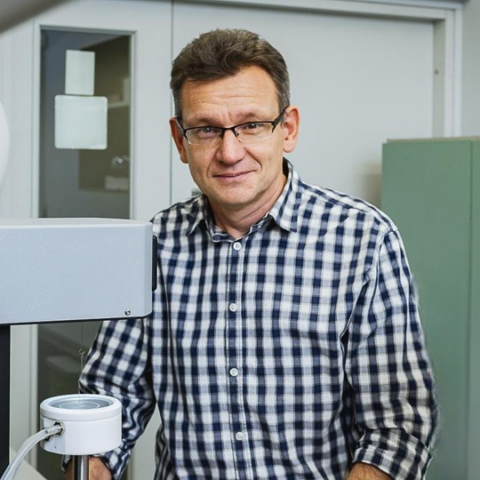
The research activities are focused on designing efficient, safe, and environmentally benign chemicals, formulations, and processes. We target chemical transformations in accordance with the concept of sustainability and the principles of green chemistry.
Greener organic chemistry is applied to the development of more sustainable organic synthesis methods to obtain small molecules and functional materials for biomedical, environmental, or industrial applications.
We explore rational design of antidotes-reactivators of AChE inhibited by toxic organophosphorous compounds and potential anticancer agents using methods and practices of medicinal chemistry. We develop innovative formulations for drug delivery based on functionalized carbon nanoparticles (nanodiamonds and nanodots) and biocompatible and biodegradable platforms.
Renewable feedstock in chemistry principle is fulfilled through inventing new more sustainable protocols for biomass valorization and designing novel lignin-based materials for catalysis, biomedical application, and climate-resilient construction, following principles of circular bioeconomy.
Design for degradation is supported by study of biodegradability via OECD 301D Closed Bottle Test facility installed by the team to identify low-toxic and mineralizable transformation products, targeting “benign-by-design” approach.
Risk management of technogenic accidents includes improvement of
- antidotal and decontamination formulations for more sustainable kits for the first responders and volunteers;
- more sustainable disinfectant formulations, and
- prevention and reduction of chemical and biological threats with support of Artificial Intelligence (AI) and Deep Learning (DL) techniques to enable distinguishing of toxic industrial compounds, bacteria, fungi and viruses based on their unique fingerprints within a complex environment.
Main research topics:
- Greener methods for organic synthesis and medicinal chemistry
- Renewable feedstock in chemistry via chemical valorisation lignin and peat · Design for degradation via biodegradability study and “benigh-by-design” approach
- Technogenic risks mitigation via novel formulations for first responders and via reconnaissance and prevention of chemical and biological threats.
biodegradability, biodegradation, biomass valorization, chemical decontamination, medicinal chemistry, sustainable chemicals and formulations
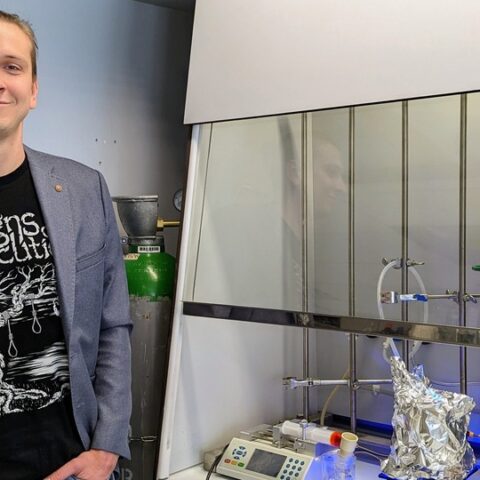
The research in the group is focused on the development of new electro- and photochemical transformation in continuous-flow. Our research is multidisciplinary, as we combine modern organic synthesis techniques with chemical engineering in order to achieve high efficiency and sustainability. In electro- and photochemical reactions, electricity or light are used as traceless and green reagents to generate highly reactive species under mild reaction conditions, which gives access to the new reaction pathways.
Moreover, the potential to harvest sustainable electricity from solar or wind energy and using daylight directly to perform reactions makes electro- and photochemistry highly attractive. In our group, we perform such transformation not in conventional chemical flask or test tubes, but in specially designed flow photo- and electromicroreactors, where solution of chemicals is continuously pumped through the active reactor zone. Due to the continuous nature of the process, such transformations are easy to scale up merging the gap between academia and chemical industry.
asymmetric catalysis, electrochemistry, flow chemistry, organic synthesis, photochemistry
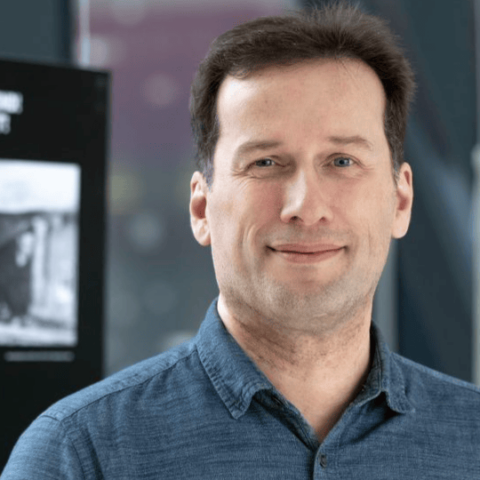
In the Laboratory of Systems Biology, we use interdisciplinary approaches to tackle questions in cardiac physiology. Our team consists of researchers with
backgrounds in biophysics, biology, and applied mathematics/physics. As a result, we are able to approach scientific questions on different scales, from
organ to molecular level, using combinations of different experimental and theoretical techniques by focusing on quantitative analysis of the data. We study diffusion in cardiomyocytes by tracking the movement of fluorescent molecules using extended raster image correlation spectroscopy.
Our results suggest that diffusion barriers are arranged in a 3D lattice with relatively small openings. Based on the analysis of autofluorescence response, we demonstrated that mitochondrial outer membrane and cytosolic diffusion barriers reduce the movement of molecules to a similar extent. We study effects of creatine deficiency to establish the role of creatine kinase shuttle in the heart.
In the research papers published this year, we demonstrated how creatine deficiency leads to intracellular adaptations in terms of alternative energy transfer systems changes and an impact on calcium handling of cardiomyocytes. These studies form a basis for our current line of research on interactions between processes in cardiomyocytes.
We have been active in the development of new techniques and distribute them as open-source tools: deconvolution software for enhancing confocal imaging, symbolic flux analysis for genome-scale metabolic networks, and real-time sarcomere length estimation techniques. We have also developed a new software for analysis of gel electrophoresis images.
bioenergetics, biomechanics, biophysics, electrophysiology, fluorescence correlation spectroscopy, fluorescence microscopy, heart, intracellular diffusion
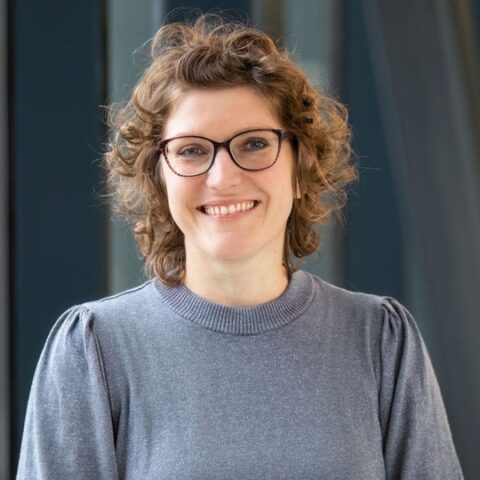
- Mari-Klara Stein
- Karin Reinhold
- Merle Ojasoo
- Mike Franz Wahl
- Marina Järvis
- Maris Zernand-Vilson
- Liina Randmann
- Aive Pevkur
- Tiiu Kamdron
- Tarmo Koppel
- Velli Parts
- Olga Tšernikova
- Mari Kurashvili
- Rusudan Tsiskaridze
- Piia Tint
- Madison Winter Kurchik
- Marge Sassi
- Maria Kütt
- Kaspar Roost
- Ljudmila Linnik
- Ebru Metin
- Amit Gupta
- Artur Toikka
- Anna Litvinenko
- Akaki Tartarashvili
- Mari-Liis Ivask
- change management
- organizational psychology
- risk management
- knowledge and innovation management
- well-being
- strategic management
- human resource management
- future of work and digital transformation
- leadership
- leader-follower relationship
- responsible and ethical organizational development
- occupational health
- occupational safety and risks
The research group is active in a number of research fields related to organisation and management, using different theoretical lenses and research methods. The primary research interests can be grouped under leadership, future of work, well-being and responsible, ethical organizational development and sustainable management.
The group collaborates with a number of internationally renowned researchers working within the confines of organization and management, future of work, occupational safety and related research areas.
The purpose of the group is to extend the scientific body of knowledge concerning the related fields of organization and management and to contribute to practice, by presenting opportunities and challenges confronting Estonian organizations and beyond. The overall interest of the group is to investigate how organizations transform their knowledge and access to new digital solutions into innovative outputs to achieve and maintain sustainable business development. The group members have a broad portfolio of expertise gained from working with a variety of national and international private and public organizations. The aim is to take advantage of it and use this expertise to develop it further for the greater good.
change management, future of work and digital transformation, human resource management, knowledge and innovation management, leader-follower relationship, leadership, occupational health, occupational safety and risks, organizational psychology, responsible and ethical organizational development, risk management, strategic management, well-being
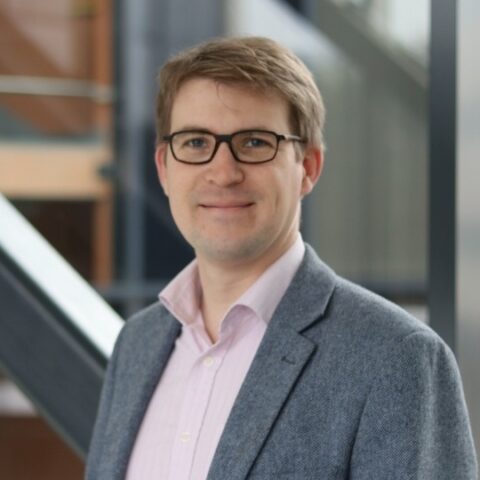
Our research group is committed to producing ambitious cutting-edge work in the field of private law, having a special focus on private legal relationships in digital environments. Primarily designed to iteratively develop expertise on these matters, members of the research group aim to share and disseminate their work to complement legal and social discourses and, where identifiable and necessary, actualize societal change therein. We aim to contribute to international, national and regional debates on these matters, address traditional and novel legal problems with a varied toolbox of methods, and, where appropriate, based on developed expertise, propose nuanced policy-recommendations and context-specific legal advice.
Big data, IoT, AI and the respective legal interferences of their implementation and use in society form the core subject of our research, but we have also focused on legal implications of the Gig-economy, competition law and data governance issues in Smart Cities, digital evidence, online dispute resolution and LegalTech. Also research on HCI and HCI research methods, mixed research methodology, international business transactions international mediation forms an essential part of our competencies.
The research group incorporates elements of the Value-Sensitive Design framework into discussions on societally acceptable, inclusive, human-centric and thus innovative governance mechanisms in private legal relationships.
labor law
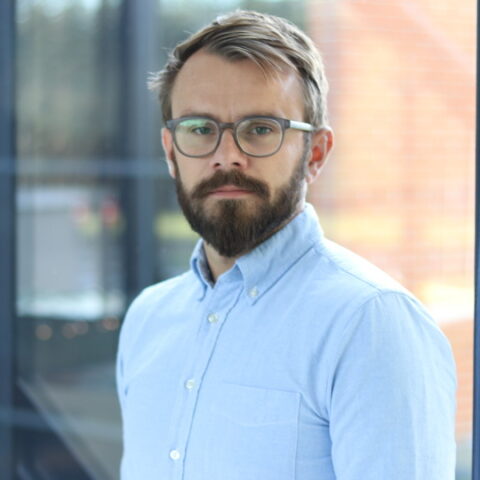
The group is the leading centre for science, technology and innovation systems and policies in Estonia.
The basic research of the group centres on the following topics:
- Techno-economic paradigms and the role of the state
- Future innovation systems and policies
- Innovation bureaucracies and management of innovation policies
The policy-oriented work of the group covers the following topics:
- Green transition and mission-oriented innovation policies
- Tackling societal challenges through innovation
- Drafting and implementing smart specialization strategies and policies in Europe and Estonia
- Management STI policies and instruments
- Evaluations of innovation polices and governance systems
- The impact of Global Value Chains on national innovation systems and policies
- Innovation in the context of smart cities
innovation, innovation policy, technology governance